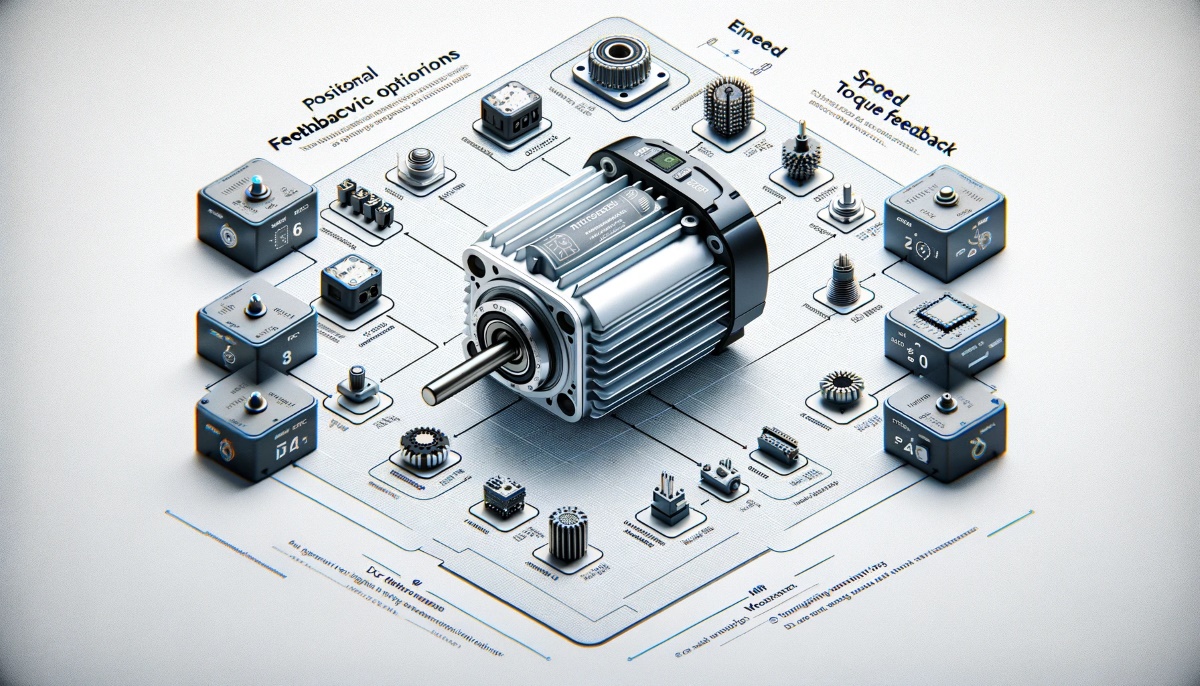What feedback options are available in DC drives?

Hello DC Control friends,
Feedback options for DC drives can vary depending on the manufacturer and the application requirements. However, there are some commonly used types of feedback systems integrated into DC drives:
Tachometer Feedback
This is one of the most traditional forms of feedback used in DC drives. Tachometers are used to measure the speed of the motor shaft and provide real-time feedback to the drive controller. The controller adjusts the voltage to the motor to maintain or change the speed as required.
Encoder Feedback
Optical or magnetic encoders can be used to provide position and speed feedback to the drive. Encoders produce pulses corresponding to movement, allowing for more accurate control over the motor's position and speed.
Resolver Feedback
Although less common, resolvers can also be used to provide accurate position and speed information to the drive controller. They are robust and can operate well in extreme conditions.
Armature Voltage Feedback
In some cases, feedback can be obtained directly from the armature voltage of the DC motor. This is often used in non-critical applications where a moderate level of control sufficiency is acceptable.
Current Feedback
Some drives use current sensors to monitor the motor current as a means to infer torque. This feedback can be used in conjunction with other feedback systems for improved performance and control.
Field Voltage/Current Feedback
In some advanced applications, especially where high torque at low speed is essential, feedback from the motor's field winding can be used to optimize performance.
Software-based Feedback
In some modern DC drives, software algorithms can estimate speed and position based on existing motor and load parameters. This is sometimes called "sensorless" control.
Multiple Feedback Options
Some advanced DC drives allow for the use of multiple feedback systems concurrently. This can provide more accurate control and is often used in high-precision applications.
When choosing a DC drive, it's crucial to consider what type of feedback is most suitable for your specific application. Some systems may require very accurate position control, while others may be more concerned with speed regulation or torque control. Always consult the manufacturer’s specifications and perhaps engage experts in the field to choose the most appropriate feedback system for your application.
While the use of DC drives in industry (at least at high power levels) has diminished, they are still widely found. Below, we have attempted to answer the most frequently asked questions about DC drives from our visitors.
- What are the operating principles of DC drives?
- What are the different types of DC drives?
- What are the key differences between DC drives and AC drives?
- What are the typical applications for DC drives?
- How energy-efficient are DC drives?
- What are the control methods used in DC drives?
- What type of DC drive is most suitable for a specific DC motor?
- What are the most common problems and solutions associated with DC drives?
- What are the power ranges used in DC drives?
- What additional components are used alongside DC drives?
- What are the advantages and disadvantages of DC drives?
- How do I choose a DC drive?
- How scalable are DC drives?
- Is integration between a DC drive and a PLC possible?
- What are the lifespan and maintenance requirements for DC drives?
- What safety features are included in DC drives?
- How is the dynamic response in DC drives?
- What feedback options are available in DC drives?
- What types of protection mechanisms are used in DC drives?
- What types of sensors can be used with DC drives?
These questions generally also encompass the types of queries that many people may have about DC drives. Each user or student will have their own unique question or interpretation depending on the specific situation or application. The answers provided are not binding and are not definitive. "You are welcome to share the article above as long as you cite it as the source." 05.2019
Your shopping cart is empty!
